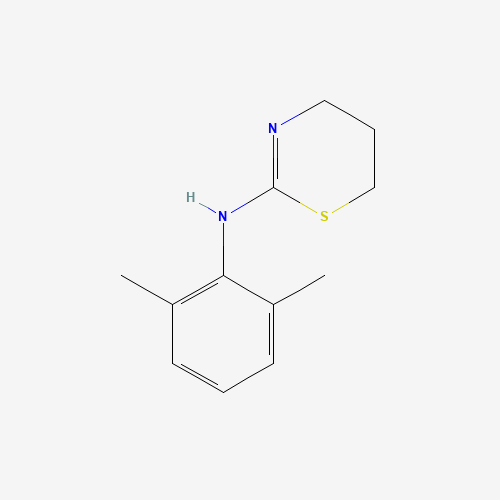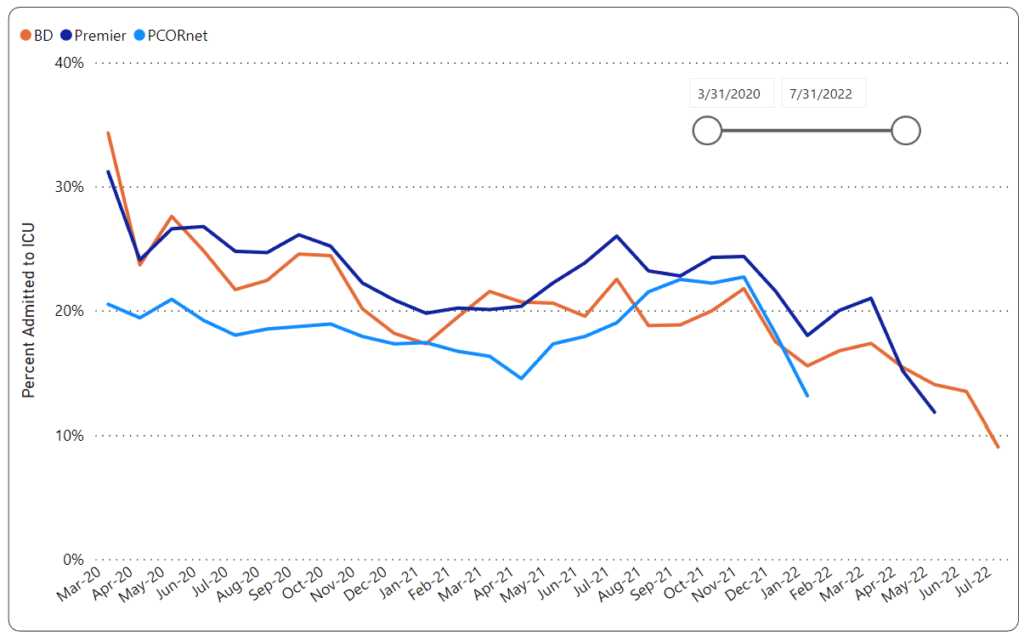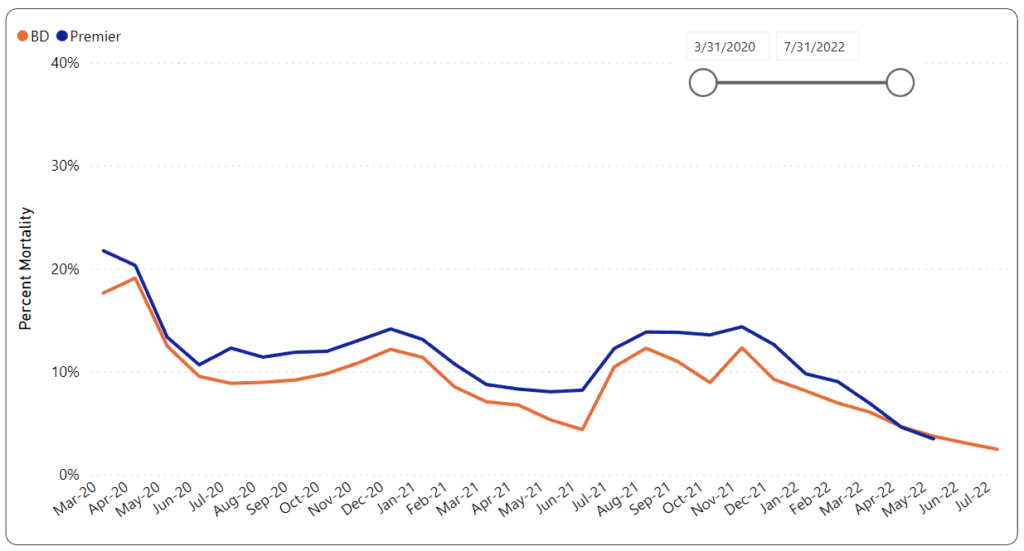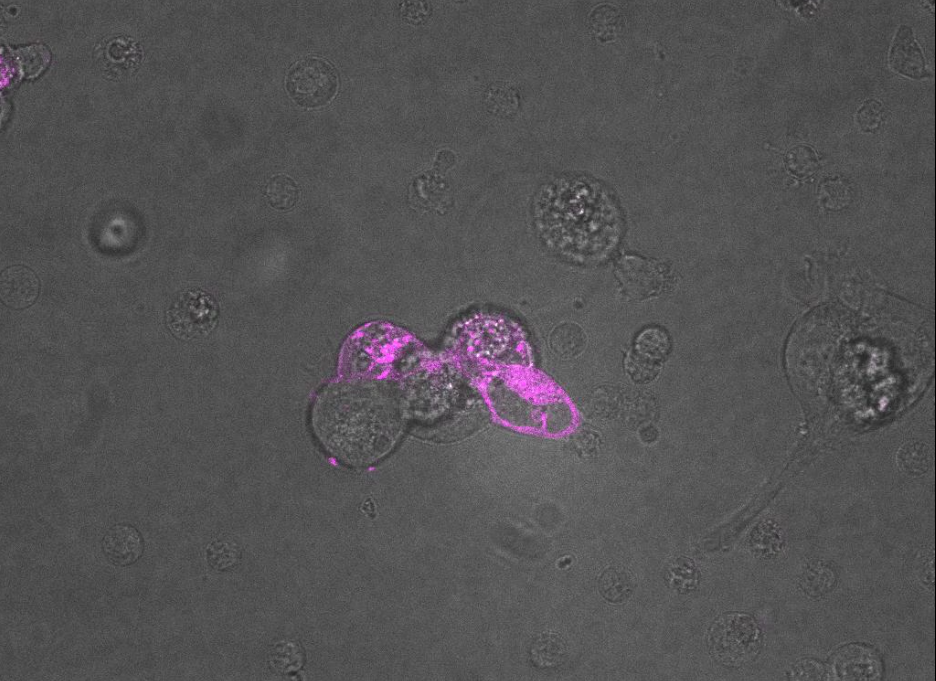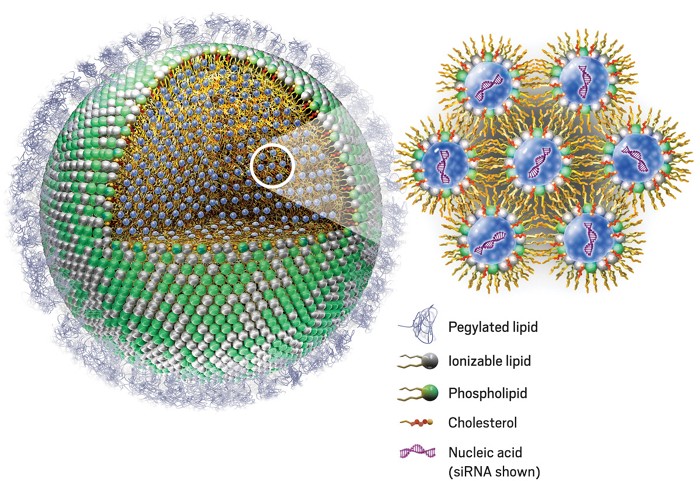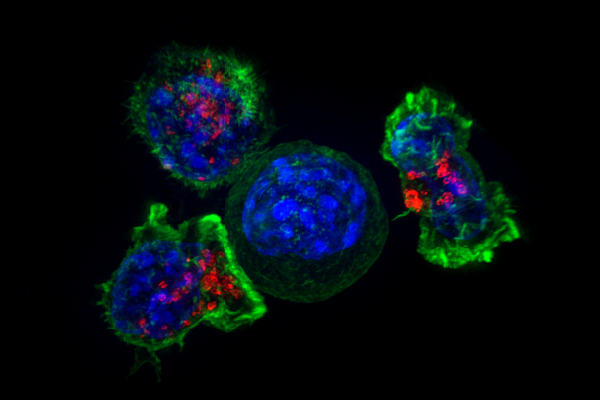Key Points
– A dog genomics study that found a smaller-than-expected relationship between dog breed and behavior has become widely controversial.
– Critics of the study’s methodology were not satisfied with its rationale for the use of dog-owner surveys to determine behavioral traits due to the possibility of rater bias.
– A well-known psychologist and dog behaviorist believes the study’s data actually proves that breed does, in fact, predict behavior to an appreciable extent–and that the researchers came to an erroneous conclusion.
– Media coverage of the study, even by the journal in which it was published, used absolute language that severely downplayed or outright denied any correlation that was established between breed and behavior.
– The researcher’s most significant finding that distinct genes were associated with individual behavior “at finer resolution than ever before” was largely overlooked.
Introduction
A recent dog genomics study from UMass Chan School of Medicine researchers claims to challenge popular breed stereotypes, concluding that dog breed is a poor predictor of individual behavior. According to the study, which was the feature article in the April 29 issue of Science, just 9% of variation in dog behavior can be explained by breed.
The study received widespread acclaim, making headlines in publications including The New York Times and The Associated Press. Many dog lovers were pleased with the results that showed a high degree of individuality in dogs. In fact, advocates for pit bull terriers largely rejoiced, as the study seemed to disprove negative stereotypes of the breed that might keep people from adopting them.
The CEO of Best Friends Animal Society said in a press release that “these findings could have far-reaching positive impacts in animal welfare,” and that the study’s findings “could be especially positive for pit bull type dogs, Rottweilers, Dobermans, German Shepherds and Chows, which often have an unfair stigma attached to their breed.”
Headlines of media reports of the study, including those from popular science publications, made generalizing claims that dog behavior is unrelated to breed.
They’re All Good Dogs, and It Has Nothing to Do With Their Breed
The New York Times
Massive study of pet dogs shows breed does not predict behaviour
Nature
Dog Breed Doesn’t Affect Behavior, According to New Genetic Research
Smithsonian Magazine
Even in Science, where the study was published, editors added the following generalization to the summary:
…dog breed is generally a poor predictor of individual behavior and should not be used to inform decisions relating to selection of a pet dog.
Science
While the study did receive positive acclaim, it also provoked significant controversy. Critics called into question the claims of the media as well as the methodology and conclusions of the study. After all, it is widely believed that breed is the most important factor in determining a dog’s behavior and temperament.
Is the criticism justified? Are the media’s generalizing claims supported by the study? First, it is important to understand the methods used by the researchers to come to their conclusion.
OneResearch dives headfirst into the media coverage, methodology, and critiques of the popular study, featuring quotes from an interview with the lead researcher.
Methodology of the Study
To determine whether dog breed could predict behavior, the research team sequenced the DNA of thousands of dogs, including pure-breds and mutts, and surveyed their owners with questions about their pet’s behavior.
The researchers used the survey responses to measure eight factors:
- Human sociability (less sociable to highly sociable)
- Arousal level (aroused to composed)
- Toy-directed motor patterns (toy-directed to not toy-directed)
- Biddability [responsiveness to human direction] (biddable to independent)
- Agonistic threshold (assertive to diffident)
- Dog sociability (less sociable to highly sociable)
- Environmental engagement (engaged to not engaged)
- Proximity seeking (affectionate to aloof)
Then, correlations were calculated to determine to what extent breed explains the values of these factors in individual dogs. They also measured physical traits like size, ear shape, and fur length as well as motor pattern behaviors like howling, retrieving, and pointing.
Another aspect of the study, which will be discussed later in this article, sought to link distinct genes with behaviors.
Discussion of Methodology
Rater Bias
Perhaps the most common critique of the study is the use of pet owner surveys to determine dog behavior. Specifically, the possibility of rater bias did not go unnoticed to skeptics of the study.
Voluntary self reporting is unscientific. Anyone who owns a pitbull is going to know the stereotypes and resist them. Questions about aggression they’ll decide to interpret how they want in their responses.
Reddit comment
Of course, nobody would assess the behavior of schoolchildren by asking their mommies, so the whole enterprise strikes me as less than scientific.
Gene Lyons for the Vallejo Times-Herald
Rater bias is addressed within the study. First, the authors claimed that by using mutts and determining their breed composition via DNA sequencing, breed-stereotype biases of surveyed owners should not largely affect the results. This claim was supported by other data within the study which shows that people are inaccurate at guessing the breed composition of mutts. Though, pure-bred dogs were also used in the study.
The authors admit to the limitation that pet owner survey responses “are susceptible to rater bias, including the influence of breed stereotypes.” Also, the authors prefaced findings regarding the relationship between breed and human sociability factor with a disclaimer that owner survey data “may be influenced by breed stereotypes and other factors, and differences are not necessarily genetic in origin.”
Kathleen Morrill, a Ph.D. candidate at UMass Chan Medical School, is the first author of the study. Morrill told OneResearch in a written interview that rater bias “can never be fully mitigated,” elaborating further:
Rather, we expect to overcome noise generated from rater bias by larger and larger samples. Strong effects are the first to appear at any given sample size. Real but small effects become more and more evident and supported at larger sample sizes.
…nor does rater bias need to be fully accounted for us to achieve our initial goal for the project: to genetically map behavioral traits.
Kathleen Morrill for OneResearch
It was not clear how larger samples would decrease the effect of rater bias. When seeking to genetically map behavioral traits, it seems that only traits not affected by rater bias could be reliably mapped.
Survey Validation
Further concerns regarding the survey focused on the validation of the questions for the context of determining large-scale trends in dog behavior and temperament. Readers wondered how they determined which questions to ask, and how accurately those questions could quantify personality traits and behaviors.
In a Reddit AMA (Q&A), Morrill addressed this concern.
Owner surveys are a widely accepted method of assessing a dog’s behavior in its home environment and allow us to achieve the scale necessary to study traits that derive from the interaction of genetics and environment. They are generally considered to be reliable, and previous work comparing survey data and professional assessments confirm this. They are widely used in veterinary medicine. Dog behaviorists will often implement these prior to in-person consultations, because a dog can behave differently in a clinical context.
Kathleen Morrill via Reddit
Though owner surveys are considered to be reliable in the context of veterinary medicine, they may not be as reliable when seeking to determine large-scale, long-term personality and behavioral trends of groups rather than making simple assessments about individuals.
A columnist for the Vallejo Times-Herald was not convinced.
Limiting a behavioral study to suburban backyard behavior tells you very little about what dogs really are.
Gene Lyons for the Vallejo Times-Herald
In terms of deciding which questions to ask, Morrill said that they chose to use previously validated questionnaires, including the Dog Personality Questionnaire (DPQ), Dog Impulsivity Assessment Scale (DIAS), Quality of Life assessment (CHQLS-15), and Canine Cognitive Dysfunction Rating (CCDR). The researchers also used questions added by dog behavior consultants.
The use of such surveys remains controversial in biological and medical research, in general, due to the myriad of biases that can compromise data. These specific surveys were not validated for the novel purpose used in the study. It can’t be determined with the available data whether this affected the results of the study.
Still, survey use is at least insightful as a starting point for generating new hypotheses that can be tested more thoroughly in follow-up validation studies. This is supported by previous use of digital phenotyping in genetic studies of human diseases.
The Dog Personality Questionnaire, developed to assess individual dog’s personality and temperament, is a good starting point for assessing the personality and temperament of individual dogs, as our project sought to do.
Kathleen Morrill for OneResearch
Results & Conclusions of the Study
The study found that for all eight factors, breed explained more of the behavioral variance than size, sex, or age. However, only 3% to 25% of variance in factor scores could be explained by breed, averaging only 9% across all tested factors. The majority of breeds scored within one standard deviation of the average for all behavioral factors, with few breeds over- or underrepresented in the highest-scoring quartiles.
Behavioral factors show high variability within breeds, suggesting that although breed may affect the likelihood of a particular behavior to occur, breed alone is not, contrary to popular belief, informative enough to predict an individual’s disposition.
Morrill et al.
The researchers hypothesized that this surprising conclusion could be due to the lack of breeding for function in favor of appearance during the past few centuries since modern dog breeds were established.
Interestingly, when grouping breeds by their historically given working roles according to characterizations by the American Kennel Club, more behavioral correlations could be drawn. For example, breeds known for herding were found to be more interested in toys, more biddable, more engaged, and more aloof. Working breeds were more dog social. Toy breeds were more independent and less dog social.
Heritability explained more behavioral variance than breed. The authors found that certain behaviors were up to 67% heritable, averaging 25% across behaviors. Motor pattern behaviors like howling, retrieving, and pointing were among the most heritable behaviors, while human sociability was the most heritable factor. 46% of the behavioral questions from the survey could be explained mostly by heritability.
Physical traits were found to be much more heritable than behavioral traits, as most measured physical traits exceeded 85% heritability.
Discussion of Conclusions
Dr. Stanley Coren Article
As quoted above from the study, the authors concluded that even though breed can affect the likelihood of certain behaviors to occur, breed alone does not provide enough information to reliably predict behavior. The study’s conclusion expanded upon past research that noted “mixed consistency” between empirical evidence and widely-recognized breed standards.
A prominent critique of this conclusion was published in Psychology Today by Dr. Stanley Coren, a psychology professor and neuropsychological researcher who is well known for his books about dog behavior.
Dr. Coren alleged that the researchers “misread” their own data. Using the study’s data, he found that breed is a “pretty good” indication of behavioral differences between groups of dogs, but that it is not a guarantee for the behavior of any particular individual.
To support his own conclusion from the data, Dr. Coren mentioned the following statistics from the study’s supplemental materials:
- 62% of golden retrievers will fall into the highest quartile for human sociability
- 72% of border collies fall into the top quartile for biddability (responsiveness to human direction)
While Dr. Coren noted that 16% of border collies will actually fall into the lowest quartile for biddability, he said that the data means that your odds are still “better than 4 to 1” that any given border collie will be highly intelligent and trainable. Thus, he believes that breed can, in fact, be a useful indicator of a dog’s behavior for prospective dog owners.
Dr. Jessica Hekman, who co-authored the study, expressed an idea similar to Dr. Coren’s in a statement to the American Kennel Club.
…you’ll definitely improve your chances of getting the right dog for you if you are also thoughtful about what breed you bring home.
Dr. Jessica Hekman for American Kennel Club
Since Dr. Coren concluded from the data that breed can be a useful predictor of a dog’s behavior, why did the study conclude otherwise?
Kathleen Morrill, first author of the study, answered questions from OneResearch about Dr. Coren’s article.
The data [visualization] tool explored by Dr. Coren indeed supports that for assertions of one or two facets of canine behavior, breed can be informative. Though, it depends on the breed and the behavior, as the relationship is far from extensive.
Kathleen Morrill for OneResearch
Morrill then brought attention to a figure in the study that shows instances in which age is “just as informative” as breed. She mentioned how the data shows that the benefits that breed offers when determining behaviors “quickly dissolve given a wider array of behaviors asserted.”
She then invoked an excerpt from the study itself–the first conclusion drawn in the Discussion, which highlights the inconsistency and “modest value” of using breed to predict behaviors in individual dogs. It states that for heritable and more breed-differentiated traits like biddability, breed can make predictions “somewhat more accurate” for purebred dogs. Though, for other factors, like agonistic threshold, they found breed to be “almost uninformative.”
Aggressive Breeds
Internet comments on news websites reporting on the study widely criticized the paper’s conclusion due to their belief that breed strongly determines behavior. Among countless anecdotes, many commentors questioned how the study could find that breed did not explain behavior despite certain breeds dominating the charts for the most bites–implying that these breeds are highly or disproportionately prone to aggression compared to others.
Pit bulls are reportedly the top breed responsible for fatal dog attacks on humans. A 2020 study from a level 1 trauma center also found that for dog bite incidents, pit bulls were much more likely than other breeds to bite without provocation and to go off property to attack. Dog bite data collected by the government of New York City shows that pit bull bites are by far the most commonly reported.
These facts caused internet users to doubt the study’s conclusions that breed can’t predict individual dog’s disposition and that breed did not explain agonistic threshold, which the study’s authors defined as “how easily [a] dog is provoked by a frightening, uncomfortable, or annoying stimulus.”
Dr. Benjamin Hart, animal behaviorist and professor emeritus at the UC Davis School of Veterinary Medicine, told SFGate that pit bulls often show no signs of aggression before an attack.
It’s quite common for a pit bull to show no signs of aggression. People will call it a nice dog, a sweet dog, even the neighbors–and then all of a sudden something triggers the dog, and it attacks a human in a characteristic way of biting and hanging on until a lot of damage is done.
Dr. Benjamin Hart for SFGate
Alarmingly, this means that owner surveys could never indicate the possibility that certain breeds are predisposed to such spontaneous dangerous behaviors. Notably, the researchers did not attempt to account for such behavior.
Morrill said that aggression was not measured because it is not a unitary behavior and can’t be well-defined scientifically, or even colloquially. Also, she explained that agonistic threshold is distinctly a fear response unrelated to predation, meaning spontaneous aggressive behaviors could not have been well accounted for, anyway.
When asked if the study had anything to say about the role of genetics or breed in predatory biting leading to severe or fatal injuries, Morrill responded succinctly, “No.”
Thus, the widely held beliefs regarding dangers of the pit bull terrier cannot be discounted by the study, regardless of conclusions that breed is not usually a reliable indicator of individual behavior.
Discussion of Media Coverage
Best Friends Animal Society Press Release
Best Friends Animal Society, an animal welfare nonprofit, is perhaps the largest advocacy group for stigmatized dog breeds. The nonprofit strongly believes that “all dogs are individuals,” and according to their latest press release, “this study proves it.” BFAS lobbies government bodies to end breed-specific legislation and prevent insurance from denying homeowners coverage due to “dangerous dog” ownership, disgustingly likening this “discrimination” to racism (see: Human races are not like dog breeds: refuting a racist analogy).
They use this study to claim that there is no such thing as a dangerous dog breed in order to support their positions against breed-specific legislation. Importantly for BFAS and its donors, this study should not influence breed-specific legislation.
We did not seek to address the validity of breed-specific legislation and its effectiveness for meeting public health goals to minimize dog bites and attacks on people. We don’t study dangerous interactions or dog bites.
Kathleen Morrill for OneResearch
Morrill did note that the limited predictive value of breed for inferring individual behavior could still have some relevance to breed-specific legislation. Nevertheless, the reason why pit bull terriers attack at much higher rates than other breeds was not elucidated by the study, possibly because it could not be measured using survey-based methodology. Additionally, the basis of the pit bull terrier’s relatively frequent and severe attacks is likely to be independent from the tested personality factors.
It follows that neither supporters nor detractors of breed-specific legislation should look to this study to support their position.
Breed Completely Unrelated to Behavior?
Absolute statements that breed has nothing to do with behavior are widespread across media coverage of the study. As established within the study and this article, this is not the case.
The study itself mentions not only through data but explicitly in the very beginning of the discussion that there is at least a correlation between breed and certain behaviors–but these correlations might not be strong enough to reliably predict behavior from breed. As Dr. Coren pointed out, the data shows that any given border collie has a 4 to 1 chance of scoring high in biddability. Still, as Morrill said, this is a narrow use case for predicting behaviors from breed.
Regardless, the media’s portrayal of the study’s results as showing that breed has no effect on behavior is not supported by the study. Morrill agreed with this in a statement to OneResearch.
Any headline that suggests no effects on behavior would be a misrepresentation. Headlines with scale qualifiers like “little effect” walk the delicate line of nonspecific enough to be technically in line with our findings and attention-grabbing to a large audience, whether they agree with the scale of “little” or not.
Kathleen Morrill for OneResearch
Misleading statements were not limited to headlines, either.
Breed means very little in predicting the behavior and personality of an individual dog, the researchers found. That appears to be especially true for traits that are most commonly associated with a dog’s personality, qualities such as cuddliness, friendliness toward strangers and aggression.
The Washington Post
Of course, aggression was not measured by the study. In fact, the word “aggression” is not written at all in the text.
The summary of the study that appears before its text on Science concludes that “dog breed is generally a poor predictor of individual behavior and should not be used to inform decisions relating to selection of a pet dog.” Dr. Hekman clarified to the Cog Dog Radio podcast that this take was written by Science editors, not the authors of the study.
I don’t want to speak for anybody else but myself, but I disagree with that statement. And I have no power to have it taken down.
Dr. Jessica Hekman for Cog Dog Radio
Media Coverage Overview
Dr. Elinor Karlsson, another key researcher and co-author of the paper, said that she was “for the most part quite happy” with the media coverage. “Our assertion that breed is not a reliable predictor of behavior in dogs was pretty clearly stated in our paper.” Dr. Karlsson clarified that even if breed is not a reliable predictor, there can still be differences between breeds. Also, traits can be heritable without being different between breeds. The study does not say that behavior lacks genetic basis.
Dr. Karlsson said she would expect more behaviorally distinct results from working dogs instead of the pet dogs used in the study, since they were more recently bred for performance rather than aesthetics.
Unfortunately, some sensationalist journalists and special interest groups misrepresented the results of the study to establish a narrative that no dog behaviors can be explained or predicted by breed. Popular science coverage is highly prone to cherry picking of data as journalists offer incomplete evidence to draw conclusions that scientists often don’t have the opportunity to correct or dispute before it’s too late.
The Buried Lede
Morrill expressed similar dismay that publications covering her study did not focus on–or even mention, in most cases–one of her most important findings.
The buried lede of our publication–one which didn’t get nearly as much media attention–is that we do successfully find genes associated with individual behavior, at finer resolution than ever before, largely thanks to all the mixed-breed dogs.
Kathleen Morrill for OneResearch
The researcher’s ability to pinpoint these genes marks an apparent methodological success that could have implications on the study of human genetics. Improvements in methodology could perhaps reveal more genes associated with distinct individual behaviors.
In human genetics, we are always thinking about genes through the lens of “What goes wrong?”–it’s all very disorder-focused.
Kathleen Morrill for OneResearch
Morrill mentioned how, in laboratory settings, researchers must “break” genes and then measure the behavioral effects in order to understand their functions.
In dog genetics, we gain a new perspective on genetic variation and its behavioral effects, which is often more subtle. In this way, we can learn more about the biological functions of genes and gene regulators.
For example, we map common genetic variation that correlates with howling frequency in dogs. This variation exists nearby a gene that, in people, mutations in the same gene causes developmental disorders. In laboratory animals, mutations in that gene cause defects in the cortical regions of the brain pertaining to speech development. But, in dogs? We might get a better sense for how vocalization varies — it’s less all-or-nothing.
Kathleen Morrill for OneResearch
This finding also has implications on studies of human genetics and subsequent medical applications.
Human susceptibility to neuropsychiatric conditions is shaped by many genes and gene regulators, and large interactive effects of genes, environment, and life experiences. We have a limited understanding of the normal functions of genes that we do find associated with human disorders, and we’re also severely under-equipped to treat and manage neuropsychiatric conditions, like obsessive compulsive disorder or severe agoraphobia, with existing psychotropic medications. Comparative medicine and genomics in dogs has highlighted many genetic contributions to disease already, and will offer the opportunity to treat canine and human disorders in tandem.
Kathleen Morrill for OneResearch



